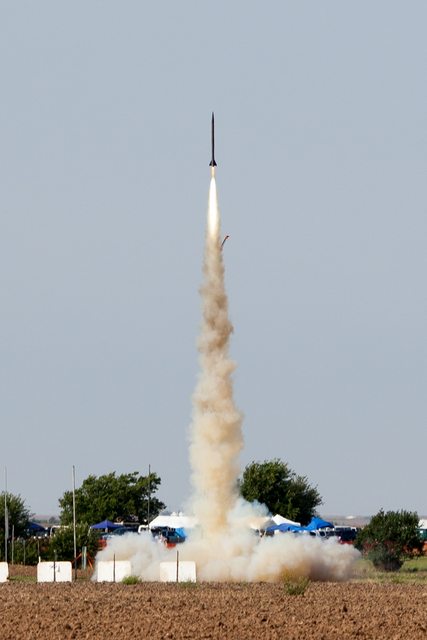I ordered a 29mm one yesterday for my Mongoose 29 & Go Devil 29 builds. Can't wait to try it out!
Groucho, your going to love them!

In case some of you haven't seen them in action. I was honored with getting a production set made by Bill and, through my good friend and, his Chief Beta Tester- Gary Katawaba. The event was the recent Midwest Power 14 Launch in Princeton Illinois on Sunday November the 6th.
The idea was very simple: Take my good friend Sabrina Sager (A 13 year old dynamo of rocketry knowledge.) and, construct a simple all fiberglass two stage rocket (29mm throughout.) utilizing electronics only on top for head end ignition and, deployment of the streamer recovery system. Built at a pre-flight *tank weight* of 4.5 lbs (We weren't trying to set world records here.) and, show her how easy Staging can be if done with simple principles along with demonstrating the performance available from common small motors used in tandem. Launched from a simple 10/10 rail...no custom tower or special equipment besides the Flyaway Rail Guides to be used.
Mission accomplished-The look in her eyes when we recovered the Sustainer and, listened to the altitude playback was priceless...12,283'
Here is a quick You-Tube video shot of the flight by my good friend Nick Adams.
https://youtu.be/n1IzrAYfCzQ
A couple of pad photos of us ready to go also shot by Nick Adams.
View attachment 306655View attachment 306656
Very simple to use, strong construction and, little works of art...They landed only about 30' away after the launch. They helped us get the straight off the rail performance we wanted and, held up beautifully.
The only thing i would do different next time would be to locate them slightly higher above the fins since we did show small evidence of fin strikes but, the strong construction and, launch video showed that was not a major issue.
We (Sabrina and, i.) were very happy to debut this great little product and, thankful of the work done by Bill Cook and, Gary Katawaba to make sure they were there at the event for us to use...
Thank-you!






